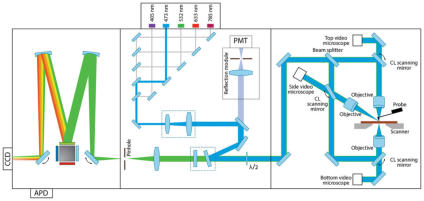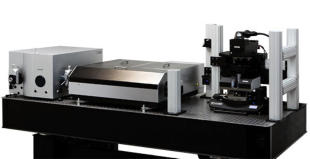UPR-Humacao


Last Update August 2024
Recuerdos de
laboratorio Química
Analítica..…

NSF-MRI 2320039


ABSTRACT
Non-Technical Description: The University of Puerto Rico - Humacao (UPRH) is enhancing its research, education, and training capabilities with the addition of an atomic force - Raman confocal microscopy (AFM-Raman) instrument. Researchers from UPRH and other institutions in Puerto Rico are using the instrument to advance knowledge in areas at the interface of biology, chemistry, physics, and materials sciences. The research conducted by the group benefits society by developing new materials and devices for health, environmental, energy, and electronics applications. In addition, hundreds of minority undergraduates and high-school students benefit from learning and applying new analytical techniques for their research projects and from the integration of laboratory experiences into science curricula. The outreach program is also enriched by exposing students and teachers to new analytical and imaging techniques. As a result, more minority students are motivated and better trained to pursue advanced degrees and more competitive sciences careers. Finally, the AFM-Raman instrument benefits the larger Puerto Rican research community using UPRH's shared research facilities and promotes the development of new collaborations. Technical Description: AFM-Raman is an integrated solution for simultaneous AFM and confocal Raman, fluorescence, scanning near-field optical microscopy (SNOM), and tip-enhanced Raman scattering (TERS) measurements. The science enabled by this instrument provides relevant societal benefits by contributing to fundamental and applied research in the following projects as examples: (1) study the development of liquid marbles for colorimetric assays with the goal of minimizing pipetting steps, (2) understand the physics and growth dynamics of silver nanoparticles for the development of ultra-sensitive, highly-selective, and low-cost surface-enhanced Raman spectroscopy (SERS) sensors, (3) understand the effect of cellulose functionalization with pillar[n]arenes on trapping and detecting heavy metals and/or organic molecules in water, (4) develop new gallium-derived nanomaterials for drug delivery, sensors, and applications in medicine, (5) develop new sensors and passive electronics using conductive polymers nanofibers blends, (6) understand structure/property relation of carbon-based nanomaterials to develop self-standing and flexible composites with tunable properties for new strain, photo-sensing, and wearable electronics applications, (7) understand the effect of doping agents on the crystal structure of the electrocatalyst zinc oxide use in the oxygen reduction reaction in a fuel cell. This Major Research Instrumentation (MRI) project is jointly funded by the Division of Materials Research (DMR) and the Established Program to Stimulate Competitive Research (EPSCoR). This award reflects NSF's statutory mission and has been deemed worthy of support through evaluation using the Foundation's intellectual merit and broader impacts review criteria. Browse NSF project funded by MRI program




















